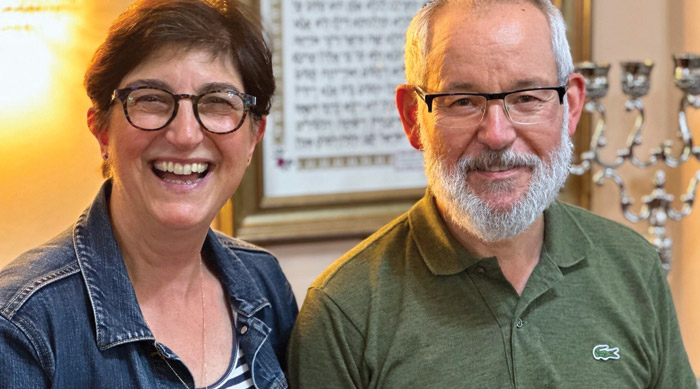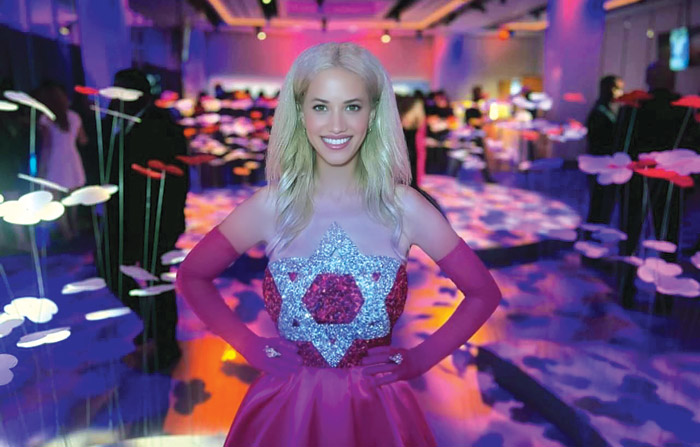The ultimate nonprofit working on diversity, dignity and respect in Hollywood, GLAAD recently released its annual “Where We Are on TV” report. It is a comprehensive report on diversity in primetime characters in the 2016-17 television season. This marks the 21st year that GLAAD (formerly the Gay & Lesbian Alliance Against Defamation) has tracked the presence of diverse characters on television, and now the second year it has counted diversity of characters on original series that premiere on the streaming content providers Amazon, Hulu and Netflix.
GLAAD’s findings include a record-high percentage of recurring characters with disabilities on scripted broadcast television. Frankly, the numbers are abysmal. But the trend is going in the right direction. Currently, 1.7 percent (15 characters versus last year’s 0.9 percent or eight characters) have disabilities.
As a person with a disability, I am deeply grateful for GLAAD’s focus on disability. Ableism — discrimination against people who have disabilities — is frequently left out of diversity discussions despite the fact that 56 million Americans have a disability. Its report shows the stark numbers that come from a systemic problem of ableism in Hollywood. It is a wake-up call that also points to a pervasive stigma among audience members against people who have disabilities, and other minorities, given that there is not enough of a widespread outcry against this practice.
The U.S. Census Bureau’s 2015 American Community Survey’s one-year estimate reports that 12.6 percent (39.9 million people) of U.S. non-institutionalized citizens report living with an apparent disability. In its count, GLAAD included characters who would be covered under the Americans With Disabilities Act (ADA), which includes people living with non-apparent disabilities such as cancer or HIV and AIDS. Inclusion of those disabilities would greatly increase the figures found by the U.S. Census Bureau. While the percentage of series’ regular characters who have disabilities has increased in broadcast entertainment this year, primetime programming continues to fall incredibly short in reflecting the reality of this demographic.
This year, we see the highest percentage of inclusion since GLAAD began gathering disability statistics in the 2010-11 season. According to the report, Fox leads the way among broadcast networks, counting five regular characters who have disabilities. On Fox, “Empire’s” Lucious Lyon has been diagnosed with the neuromuscular disease myasthenia gravis, oldest son Andre lives with bipolar disorder, and out musician and middle son Jamal has post-traumatic stress disorder. On “Rosewood,” series lead Dr. Beaumont Rosewood has a pair of holes in his heart, and “24: Legacy” features a character who has post-traumatic stress disorder. NBC’s “Superstore” includes a character who uses a wheelchair, while “Taken” and “This Is Us” each feature characters diagnosed with cancer. The new series “Trial & Error” features a character with the cognitive disorder prosopagnosia or facial blindness and dyslexia.
ABC’s “Grey’s Anatomy” continues to include out Dr. Arizona Robbins, who uses a prosthetic leg, and “How to Get Away with Murder’s” Oliver Hampton, who was diagnosed as HIV-positive during Season One, has been made a series regular for the upcoming third season. The new comedy “Speechless” is centered on JJ DiMeo, a teen living with cerebral palsy. One of the characters on CBS’ “NCIS: New Orleans” uses a wheelchair, and a character on the drama “Scorpion” has been diagnosed with obsessive compulsive disorder and anxiety. Lastly, a character on The CW’s “The 100” has mobility issues because of a severe leg injury. There is one LGBTQ recurring character in broadcast entertainment with a disability: Philip on Fox’s “Empire,” who has post-traumatic stress disorder.
On cable series, Freeform includes recurring deaf, lesbian student Natalie on “Switched at Birth,” and “Pretty Little Liars’ ” Jenna who is blind. On Showtime, “Shameless’ ” Ian Gallagher has bipolar disorder and his boyfriend, Caleb, is HIV-positive.
In streaming series, there are three LGBTQ characters who are cancer survivors who have opted for double mastectomy (Tig on Amazon’s “One Mississippi,” Valerie on Amazon’s “Transparent,” and Maxine on Netflix’s “Wentworth”) and Gobber on Netflix’s “DreamWorks’ Dragons” is an amputee. “Transparent” lead Maura has heart issues that prevent her from further medical transition, and recurring character Shea disclosed that she is HIV-positive this season.
Last year, GLAAD partnered with the Elizabeth Taylor AIDS Foundation and AIDS United to release a guide for talking about HIV and AIDS in the media. This year, broadcast is the only platform to include a regular character that is HIV-positive on scripted programming, though it is notable that all three platforms include at least one HIV-positive character.
ABC’s “How to Get Away With Murder” has broken new ground with normalizing living with HIV through Oliver’s story as the virus is portrayed as part of his life, and he is given stories outside of being HIV-positive. Previous episodes also have educated the public on relationships between serodiscordant couples (one partner who is HIV positive, with one partner who is HIV negative) through conversations about the HIV prevention medication PrEP (Pre-Exposure Prophylaxis) and establishing guidelines for their romantic relationship. This same type of conversation was included in Showtime’s “Shameless” earlier this year as Caleb disclosed his status to boyfriend Ian before the couple’s first sexual encounter. The most recent season of Amazon’s “Transparent” includes trans woman Shea disclosing her status as HIV-positive, but the moment is sadly portrayed as an admission that comes during an argument with a prospective new love interest, who then leaves.
GLAAD, like our group RespectAbility, is happy to see more series including HIV-positive characters, and hopes to see more creators fairly and accurately telling stories about people who have HIV, just like many other conditions and disabilities. However, as noteworthy as these figures and other characters with disabilities in the report are in comparison with previously tracked seasons, they fall far short of the percentage of people with disabilities in communities nationwide.
The only way to create authenticity within broadcast entertainment is if characters with obvious and hidden disabilities are included within every script and storyline, just as they are found within the diversity of our everyday experience. All too often, these characters are featured when there is a focus on disability within the script, when, in reality, characters with disabilities should be included in the vast majority of roles that are nondescript and have nothing to do with a particular disability. Only then will these percentages improve.
Progress also is key in unscripted/reality television. A&E’s new Emmy-winning show “Born This Way” tears down barriers in many ways. Not only does it star seven young people who have Down syndrome, those individuals are diverse. Christina is Latina. Elena’s mother is from Japan, and they show the immigrant experience. John is African-American. This is important for several reasons. One is that when disability is depicted in culture, it tends to be white.
Real storytelling requires exploring people with multiple minority status (i.e., person of color plus disability, LGBTQ and disability). Second, far too many people of color in the United States who have a developmental disability are not receiving the diagnosis, school accommodations and high expectations they need to succeed. There are currently 750,000 people who have disabilities behind bars in the U.S. — and the majority of them are people of color. The individuals who star in “Born This Way” and their families are models of how disability can and should be accepted and addressed in minority communities.
Also worth noting from unscripted TV is the success of “Dancing With the Stars,” which has done a lot for disability inclusion. Amy Purdy, an amputee, for example ,was a star. Nyle DiMarco, who is deaf, also was a star there and appeared on “America’s Next Top Model” as well. Marlee Matlin appeared on “The Apprentice” and other shows.
GLAAD’s work helps a social justice issue where a marginalized group of people is not given the right to self-representation. RespectAbility is honored to work alongside them in the battle to end stigmas and advance equality. Together we must end hate and low expectations through more inclusive shows and casting, through the media holding the industry responsible, through the avoidance of stereotypical stories and ultimately through the telling of stories that depict people with disabilities without focusing only on the disability. “Born This Way,” in featuring people with disabilities, hits all the marks while also being a fun and fabulous show. But we must all fight for full diversity and acceptance for the LGBTQ community, for all races and ethnic groups, ability status and more. All of us are equal — and the shows and films we see should mirror the world at large.
Jennifer Laszlo Mizrahi is the president of RespectAbilityUSA.org, a nonprofit working to end stigmas and expand opportunities for people with disabilities. Dyslexic herself, she also has experience raising a child with multiple disabilities.





















 More news and opinions than at a Shabbat dinner, right in your inbox.
More news and opinions than at a Shabbat dinner, right in your inbox.